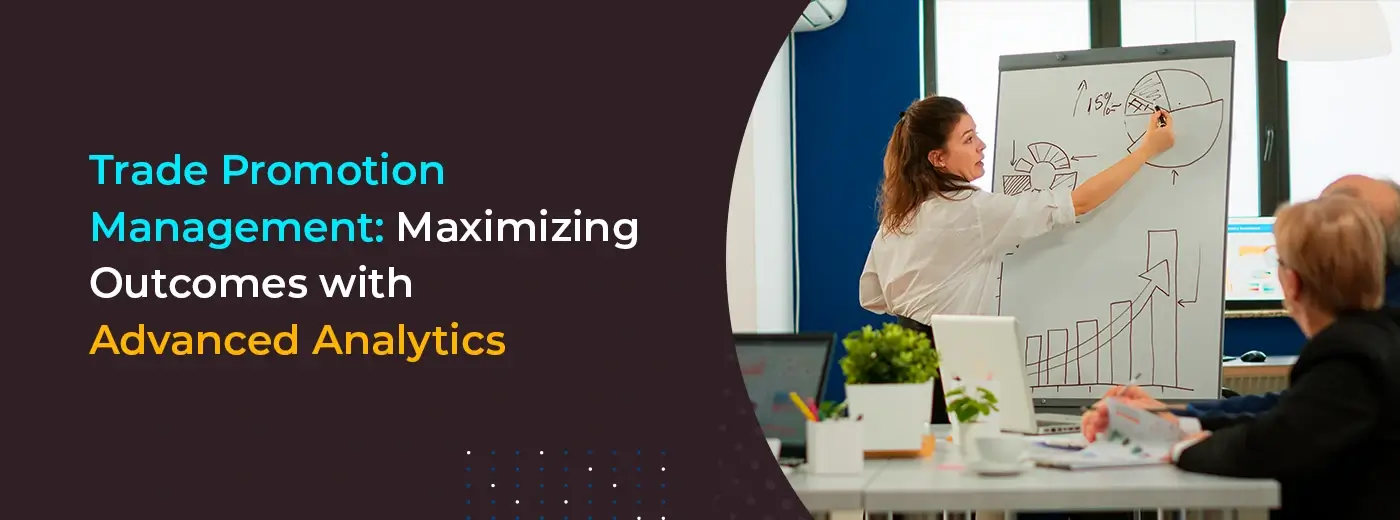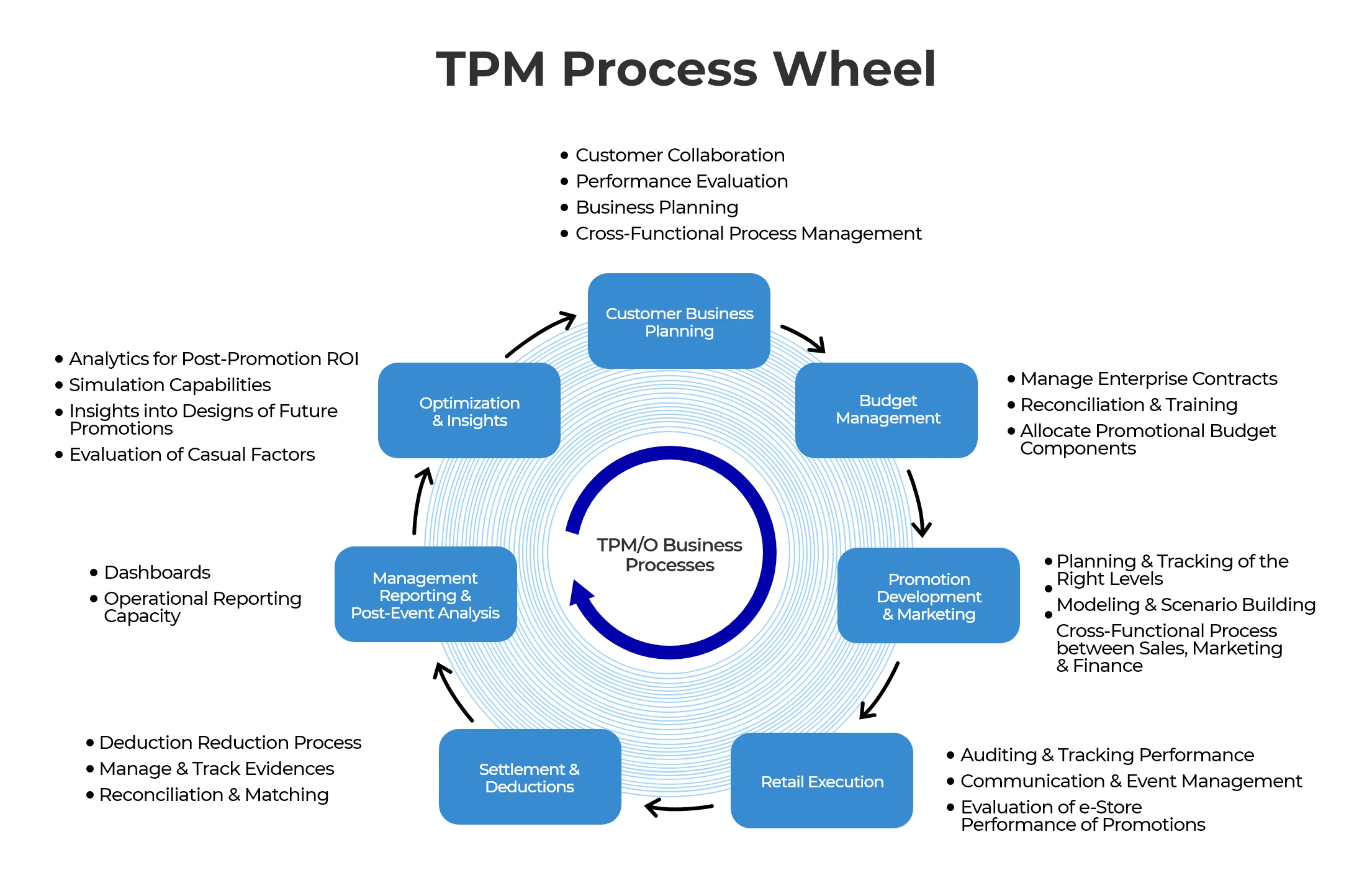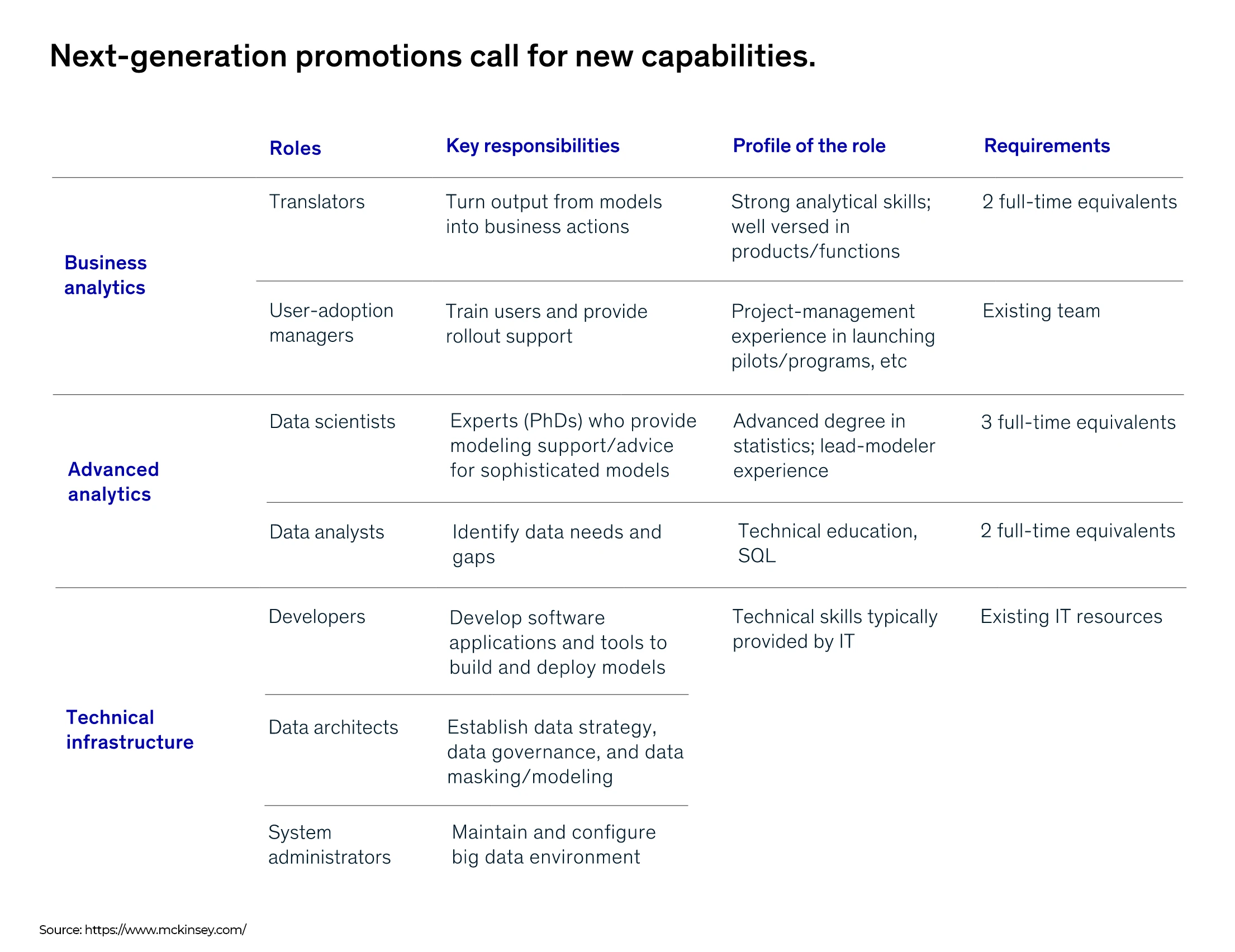
Sign up to receive latest insights & updates in technology, AI & data analytics, data science, & innovations from Polestar Analytics.
“A staggering 42% of all CPG sales are influenced by promotions, highlighting their critical role in driving revenue and market share. Yet, a shocking 35% of promotion funds are wasted due to ineffective planning and execution.”
It's clear that the stakes are high!
Trade promotions have long been a cornerstone of sales strategy in the fast-paced Consumer Packaged Goods (CPG) industry. However, balancing the competing priorities of different departments – from driving revenue and market share to building brand equity and optimizing costs – has often been a complex challenge.
Today, data has emerged as a powerful catalyst for transforming this complexity into a strategic advantage. By harnessing the power of big data and advanced analytics, CPG companies can unlock invaluable insights to optimize trade promotions, enhance ROI, and drive superior growth.
In this blog, we will delve into the intricate dynamics of trade promotion management (TPM), exploring how to align diverse perspectives and transform this function from a source of friction into a competitive edge. Let's uncover how the right Trade promotion management (TPM) solutions and analytical tools can empower businesses to stay ahead of the curve in this fiercely competitive market. Dive in!
Trade promotions are a vital element of the marketing mix for almost every brand in the CPG industry. They serve a dual purpose: driving short-term demand and motivating retailers to showcase and sell more of a company’s products. As part of revenue management, trade promotions encompass marketing campaigns and activities designed to boost sales to the final consumer through a push strategy involving wholesalers and retailers.
Trade promotions can take various forms, such as discounts, rebates, bonuses, and other incentives aimed at encouraging partners to increase sales of the company's products. These promotions represent a significant expense for companies, making it crucial to manage them effectively to ensure a good return on investment.
Without a well-defined strategy, businesses risk not achieving profitable results or meeting key performance indicators (KPIs). This is where trade promotion management (TPM) becomes essential. Trade Promotion Management (TPM)helps businesses track their results, drive profitable outcomes, learn from past promotions, and apply those insights to future efforts.
Fortunately, there are many ways to utilize trade promotion effectiveness to increase the bottom line. There you go:

| Trade Allowances | Trade Incentives |
|---|---|
| Trade allowances are financial incentives or discounts from manufacturers to retailers or distributors to encourage them to stock, display, or promote products more prominently. Examples include off-invoice allowances (direct discounts on orders) and bill-back allowances (reimbursements for promotional activities). These allowances aim to boost product visibility and sales. | Trade incentives are rewards given to retailers or distributors to meet specific sales targets. These can include performance-based incentives (bonuses for meeting sales goals) and volume rebates (rewards for purchasing large quantities). The goal is to motivate retailers to increase sales and prioritize the manufacturer’s products. |
| Trade Shows | Trade Contests |
| Trade shows are events where manufacturers, distributors, and retailers gather to showcase and demonstrate products and services. They offer opportunities for product demonstrations and networking with potential clients and partners, helping to build relationships, generate leads, and raise brand awareness. | Trade contests are competitive events that encourage retailers or distributors to achieve specific sales or marketing objectives. Examples include sales competitions with prizes for top performers and marketing challenges for creative promotional campaigns. These contests drive engagement and boost sales efforts. |
“As per the Promo Optimization Institute, over 65% of retailers struggle to integrate trade promotions with other retail domains, leading to misalignment with pricing, supply chain, and assortment management.”
For C-suite leaders these complexities often stem from poor cross-departmental communication. Effective trade promotions require coordinated efforts between marketing, sales, finance, and supply chain teams. When these departments work in isolation, strategies become misaligned.
Brands need to drive a unified vision, they must ensure marketing aligns with business goals. Moreover, supply chain operations need to be integrated along with synchronized strategies with sales.
Promoting regular cross-functional meetings, transparent data sharing, and collaborative decision-making helps bridge these gaps, leading to more effective and aligned trade promotion forecasting.
CPG companies invest about 20% of their revenue in trade promotions annually, amounting to over 500 billion dollars trade spending globally. A Mckinsey study in 2017 reveals that 30% of CPG players prioritized trade-promotion optimization through big data and advanced analytics. The important question is how to make it happen to achieve significant business value.
The most effective approach is to have a holistic view of existing promotions and transparent data on their operational functions and organization. It is imperative for CPG companies to build an analysis framework with crucial KPIs that enables them to generate standard evaluations for promotions.
At Polestar Analytics, we take a transformational approach to trade promotion management (TPM) covering end-to-end processes, advanced technology, and CPG analytics to plan, execute, and optimize trade spending.

Businesses that re-evaluate their Trade Promotion Management (TPM) approach by integrating its AI-powered analytics will position themselves to gain granular insights and capture unmatched value. By leveraging analytics, we help organizations answer critical questions about Trade Promotion Management (TPM) implementation that include:
Organizations can improve the impact of trade promotions through advanced analytics consulting and predicting future results based on historical data. The goal is to achieve optimized promotional spending across the portfolio and the customer base with direct integration into planning.
This allows organizations to better understand how seasonality, distribution, and promotional levers drive sales. Optimizing how organizations design promotion programs and use post-event analysis to develop promotional guidelines is just as important as automatically prefilling the baseline for future periods to automate volume planning.
Companies will thrive if they can harness scenario planning to simulate future promotions and identify the best parameters.
The issue with traditional Trade Promotion Management (TPM) techniques is that, in the absence of predictive analytics, they are unable to account for variables like price increases, prospective supply restrictions, or declining consumer loyalty as a result of the expansion of e-commerce.
By integrating trade promotion with analytics, businesses hold the power to automate retail data management. Marketing teams can identify the real value drivers in promotional activities with the use of effective trade promotion analytics, which generate precise, prescriptive, predictive, and descriptive insights.
You can benefit from Trade Promotion Management (TPM) systems that incorporate AI and machine intelligence in:

Organizations that invest in effective trade promotion analytics solutions report improved forecasting, increased visibility of opportunities and risks, control over Trade Promotion Management (TPM) performance, and better ROI.
This can lead to a sustained improvement in trade spend ROI of 5–10% and an increase in revenue of 2–5%. Organizations can consider trade promotion management (TPM) practices to achieve desired outcomes:
Inevitably, TPO/M using advanced analytics can turn the tables for the CPG industry. With big data, you can bridge the gaps in your existing promotion campaigns and turn your Trade Promotion Management (TPM) insights into record-breaking success stories.
CPG companies need to establish an infrastructure to manage promotions that includes analytics capabilities to derive a process to translate the insights into actions and performance management to drive sustained impact.
Polestar Analytics helps its CPG clients gain a competitive advantage with a razor-sharp focus on leveraging the potential of analytics to drive promotional effectiveness. If you are a forward-thinking CPG data analytics player looking to set up effective Trade Promotion Management (TPM) strategies for profitable growth, you can explore our catalyst.

With this in place brands can empower their trade promotions with our AI expertise, where we can:
Diagnose: Leverage Elastic Net Regression to analyze historical data and identify KPIs.
Simulate: Forecast the impact of planned promotions on metrics like volume uplift and ROI – powered by a Light GBM model that accounts for complex interactions.
Optimize: Identify the optimal promotion strategy and calendar – formulated by our module which utilizes mixed-integer linear programming to solve optimization challenges.
Therefore, these metrics can provide deeper insights for enhanced decision-making for better trade promotion planning.
Trade promotions are a crucial yet complex part of sales strategy, marked by competing priorities and objectives. We have explored the different perspectives of key stakeholders.
Looking forward, the future of trade promotions lies in leveraging advanced technologies like XAI and analytics. This can provide deeper insights, enhance decision-making, and create more cohesive strategies that align with the diverse objectives of all stakeholders. Embracing these innovations will enable organizations to not only optimize their trade promotion efforts but also drive sustainable growth and maintain a competitive edge.
About Author

Data poet
Stories are data with a soul. They are always looking for a way to be heard.